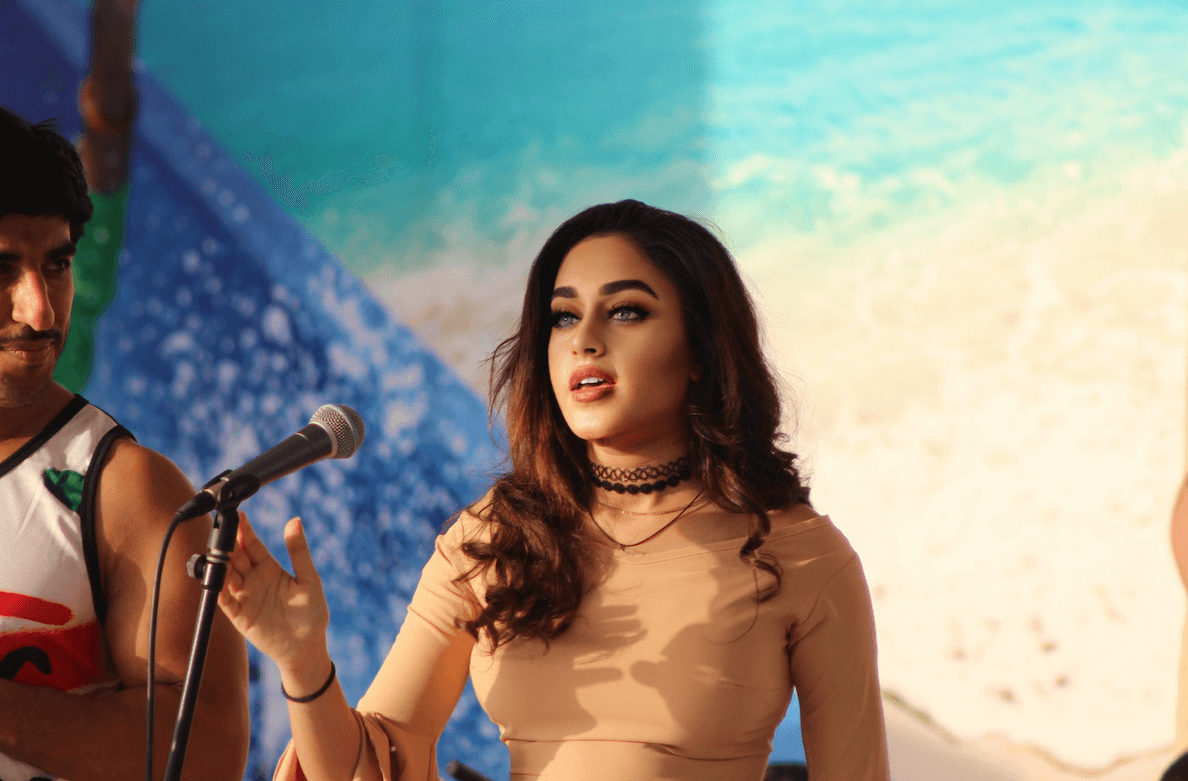Sharjah Performing Arts Academy Fills an Educational Gap in the Gulf
DUBAI—The United Arab Emirates has long been making strides as the Gulf’s cultural hub, with performing arts becoming a key part of the country’s tourism offerings, but one thing has been missing or in short supply: local talent and local education.
Only a small number of universities so far offer anything in the performing arts: The American University of Sharjah has a performing arts program, and NYU–Abu Dhabi has a theater program.
A new addition, the Sharjah Performing Arts Academy, is helping to fill that gap.
When it opened last year, the academy had just eight students. Now it’s about to start its second year, and enrollment is already over 50. That’s an exponential leap in a region where many leave for other countries to pursue such arts education and others see it as a culturally inappropriate path to follow, or a dead-end career.
A curriculum based on local culture is a key part of the ethos behind the new Sharjah academy, which offers bachelor’s-degree programs in acting, musical theater, and production arts.
“It is not about picking up a Western model and just dropping it in the Middle East,” says Jacqui George, leader of the production arts program. “That is so far removed from what we’re about.”
And despite Sharjah’s being considered the most conservative of the seven emirates, where girls and boys commonly study separately, the new academy follows a co-educational model.
An Opportunity to Study Locally
Ayesha Al Hammadi, 20, is one of the academy’s first students and is proud to be breaking the norm.
Al Hammadi, who’s from a small town on Sharjah’s coast, Khorfakkan, has loved singing and performing since childhood. “When I was 5 years old. I started singing at school, dancing,” she says. “Until now, there was never anywhere to study this here and take it to a professional level, so I’m really happy we have this.”
For many families, it would not be an approved path. Girls are directed more to the likes of medicine or engineering, business or information technology. “In the beginning, they weren’t so supportive,” Al Hammadi says of her family. “But when I showed them I have something to fight for, they started to open up to the idea and hear my voice. Now, they are really supportive of me.”
However, things are changing. “If you asked me how it is viewed to be a woman performing on stage in 2010, that would be a huge problem, but right now, everyone can do anything. They became more accepting, and as long as you express yourself with a good art that represents you and your culture, and it doesn’t make your country look bad, it’s OK.”
Balancing Change and Tradition
A big draw for Al Hammadi is the ability to follow her passion without leaving the country or her family. She understands that she is taking on the role of ambassador for something almost unknown to her peers. Additionally, she is comfortable to perform without her traditional sheyla, the headscarf worn by nearly all women in her community.
“This is a serious thing for me,” she says. “Just because I don’t wear a headscarf doesn’t mean that I cannot respectfully represent my culture or my religion. It’s about being yourself and expressing yourself, which is why I don’t see it as a problem.”
The academy, which teaches in English, has extended its outreach efforts around the region, and the new batch of students ready to begin represent around a dozen nations, stretching from Morocco to Singapore. It is this diversity which attracts students like Nora Saeed, 20, from Saudi Arabia, who says no country in the region could be as diverse as the U.A.E. population affords.
Like Al Hammadi, Saeed also feels that times are changing and is proud to be part of the new wave of Gulf women leading the charge. Not only is she leaving her country to study, but she is taking on a subject still deemed by those around her as unconventional. “Women are usually engineers or doctors when they study abroad, but performing arts isn’t something I have ever seen anyone do before.”
Al Hammadi says that social media apps like TikTok have helped the younger generation find new modes of self-expression through art, seeing both boys and girls expressing themselves in ways never imagined before. She herself is an Instagram starlet. Under her stage name, Almas, she has 245,000 followers on her account, @almasofficial_.
Demand for Local Talent
In spite of the cultural challenges, the job market is hungry for local talent, both on stage and behind the scenes. George, the production-arts program leader, explains: “There’s a huge demand, and they really want to see Khaleeji women at the forefront of their industry.” Organizations “are desperate for those graduates with those hugely applicable skills and graduates ready to join the industry,” from production to stage, managerial to creative, she adds.
Also in Sharjah, the American University of Sharjah has introduced its performing arts program as both a major or a minor, allowing students to explore, without necessarily straying too far from the region’s cultural and academic norms.
Anthony Tassa, a professor and coordinator of the performing arts program there, says students who train in the performing arts have “myriad opportunities to take leadership roles and develop the soft skills necessary for success in the real world,” even when students don’t choose to follow their studies into the performance arena.
The benefits of creative subjects such as the performing arts, he says, go beyond just a performance program. They also provide a place for students to nurture creativity and develop strong and effective decision making and leadership skills, which apply to other areas of life.
Bill Bragin, executive artistic director of the Arts Center at New York University–Abu Dhabi, agrees that arts education has applications beyond the creative. “Arts education helps teach creativity, innovation, teamwork, perseverance, collaboration, critical thinking, connecting disparate ideas—skills that are meaningful to all students,” he says.
Bragin notes that the value placed on performing-arts education in the emirates is growing. “Already, we have a great relationship with the Ministry of Education and their Creative Arts Academy,” he says.
“There are a number of schools where drama and music programs are deeply integrated into the teaching,” Bragin says. “For others, it’s still only occasionally offered. We’re hopeful that as the leadership of the U.A.E. continues to invest more into the creative sector, and prioritize the arts as a national area of interest, we’ll see even more broad arts education in school.”
Respecting Local Culture
At the Sharjah Performing Arts Academy, the emphasis on local culture is critical, staying rooted in the likes of classical Arabic music and instruments, among other traditions. “We want to train theater makers who can create the work that’s wanted by the audiences in the region,” says George.
“The wealth of opportunity that’s across the performing arts sector is huge,” she adds. With scenic design technology and production becoming increasingly more technical, demand is there for people who are up to speed with the rapidly changing landscape.
Saeed says there is growing interest among her peers in learning “behind the scenes” skills for both movies and stage productions. “That’s kind of why I looked at the subject, because I saw what’s happening backstage.”
Ensuring that cultural norms are respected while holding a space for people to express through art is critical to the success of the academy, George says.
In some cases, that has meant finding solutions for young women who wear an abaya and sheyla yet need to climb ladders and wear hard hats for some production work. In other cases, it has meant resolving questions like how to deliver a physical exercise class and ensure that the women feel comfortable.
“We want to make sure that everybody is comfortable and happy with how they perform,” says George. “It’s about an open conversation about how people are happy to do that. We’ve had conversations as a cohort, and as a faculty in how we do certain classes. There might be a situation where some of our women don’t feel comfortable maybe in a certain class, so we’ll change that provision and actually have a female-only session.”
What’s key, she adds, is that this conversation is possible. “It’s about what makes the individual most comfortable and confident with what they’re doing, but either way, whether you cover or not, covering is not an obstacle.”



